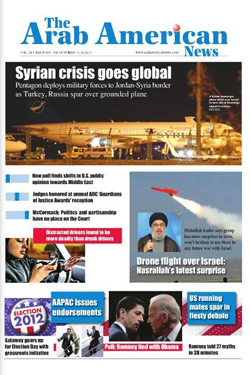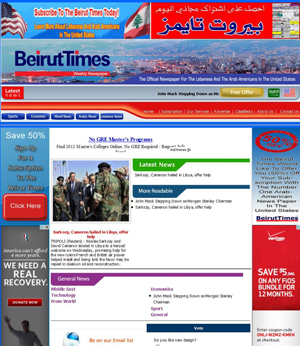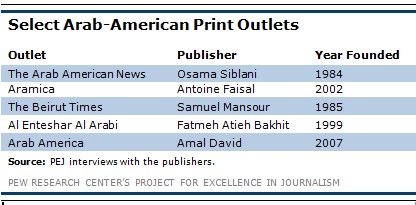Trends across most print outlets point to a shift toward online and the importance of maintaining community news coverage, even while trying to increase coverage of the Middle East and North Africa. And for the most part, Arab-American newspapers are offering both Arabic and English content to their changing readership.
[1]
[2]
[content]

[4]
[6]
[7]

[same]
Community news is a growing part of The Arab American News’ original content, which makes the paper stand out from outlets that are increasing international coverage. Siblani explained that the high cost of sending reporters into the field is making it difficult for the paper to keep up with mainstream media coverage of national and international events. Additionally, Siblani reasons, if Arab-American media are to offer something their audiences cannot get elsewhere, it is in community news and information.
[10]

[11]
[12]
[14]
[community members’]

[17]
[19]
[20]

The paper is comprised of international political news, entertainment, economic news, community events, and some religious content, with a significant portion devoted to international events since the onset of the Arab uprisings.
[there were]
[the paper]
[23]
[24]

Footnotes
[1]
“Overview of Arab American Media in the United States.” National Arab American Journalists Association. 2009.
[2]
[3]
[4]
[5]
[6]
[7]
[8]
[9]
[10]
[11]
2007. Re-posted on Arab Journalism.
[12]
2012.
[13]
[14]
[15]
[16]
[17]
[18]
[19]
[20]
[21]
[22]
[23]
[24]




